Posts Tagged: orchard
Newly Published UC Davis Study: How Imidacloprid Affects Blue Orchard Bees
The systemic insecticide imidacloprid, belonging to a class of chemicals called the neonicotinoids or "neonics," is commonly used to...
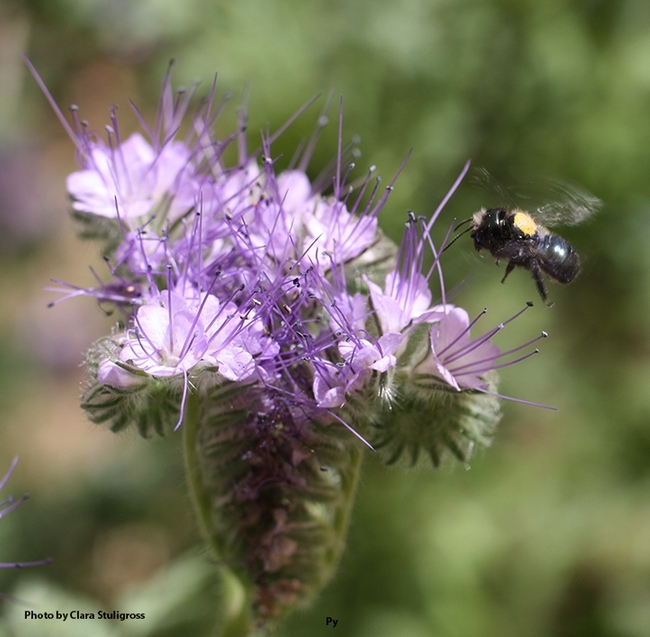
A blue orchard bee, Osmia lignaria, heads for a lacy phacelia, Phacelia tanacetifolia, at UC Davis. (Photo by Clara Stuligross)
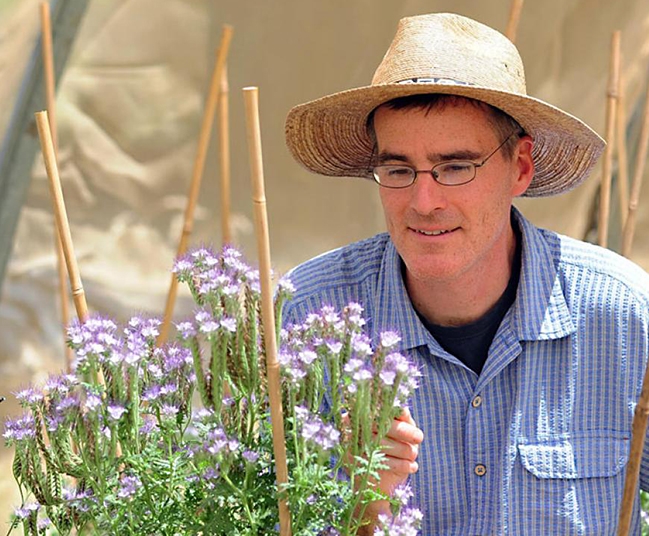
Co-author of the PNAS paper is pollination ecologist Neal Williams, professor, UC Davis Department of Entomology and Nematology. (Photo by Kathy Keatley Garvey)
UC Davis Picnic Day: Prime Time for Blue Orchard Bees, Tsetse Flies and Mosquitoes
Ah, Saturday, April 17. It's the 107th Annual UC Davis Picnic Day! What's a picnic without bugs? This year's event, all virtual, is themed...
UC Davis Research: A Double Punch to the Blue Orchard Bee
In a first-of-its-kind study, UC Davis research shows that the double punch of pesticide exposure and food scarcity drastically affects the...
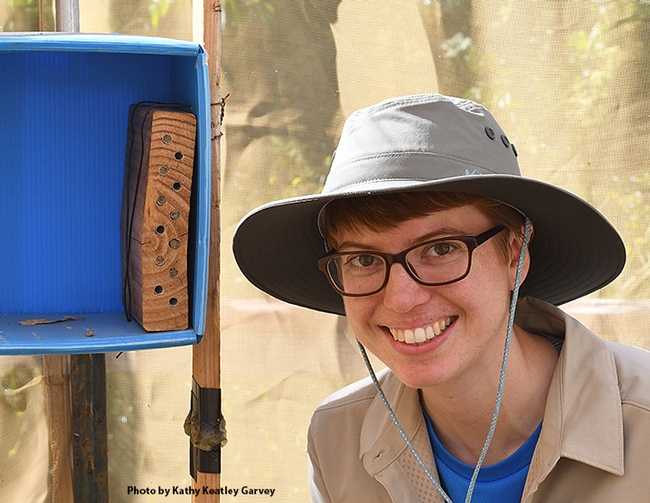
UC Davis doctoral student Clara Stuligross by her blue orchard bee nests in the spring of 2018. (Photo by Kathy Keatley Garvey)
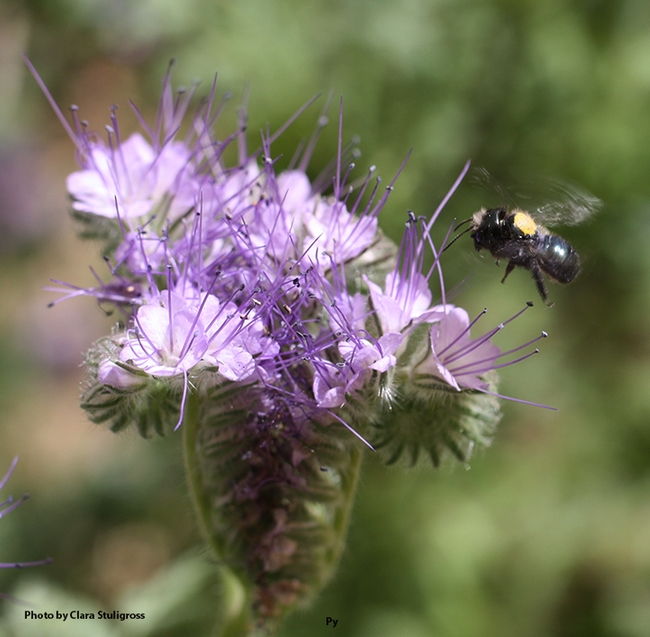
A blue orchard bee, Osmia lignaria (marked in yellow), heading for Phacelia tanacetifolia. (Photo by Clara Stuligross)
A Hidden Treasure at UC Davis Biodiversity Museum Day
Talk about those tenacious tidy tips. And those picture-perfect phacelias. When you attend the UC Davis Biodiversity Museum Day on Saturday, Feb....
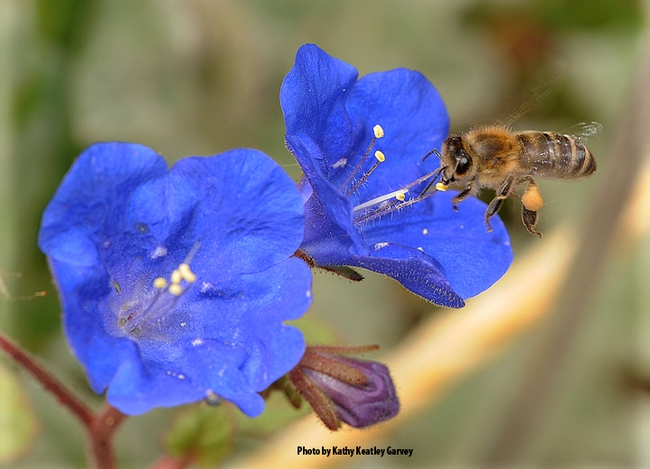
A honey bee foraging on a desert bell, Phacelia campanularia, an annual herb that is native to California. (Photo by Kathy Keatley Garvey)
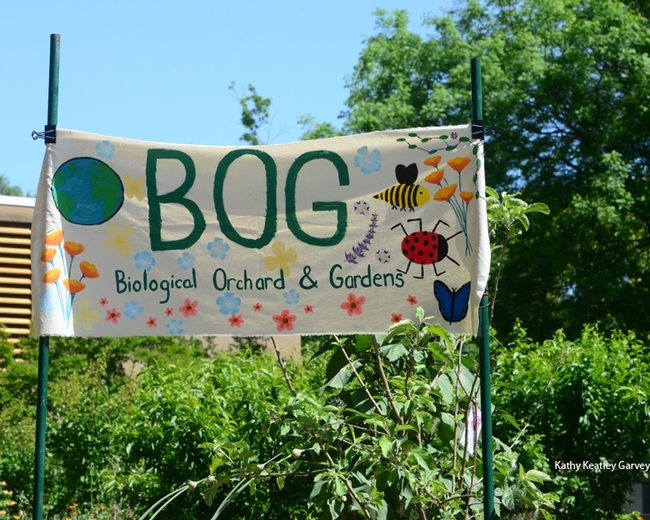
A sign defines the Biological Orchard and Gardens (BOG). (Photo by Kathy Keatley Garvey)
This BOG in the Heart of UC Davis Is a Treasure
"A bog is a wetland that accumulates peat, a deposit of dead plant material—often mosses, and in a majority of cases, sphagnum...
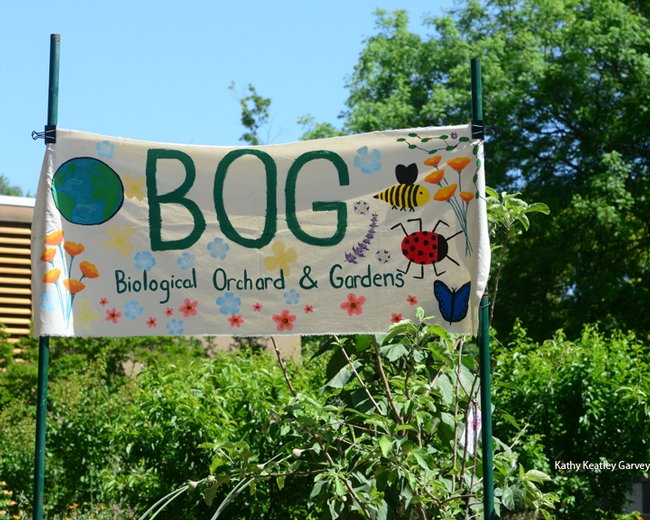
The Biological Orchard and Gardens (BOG) sign features floral and insect designs. It's located by the Mann Laboratory, UC Davis campus. (Photo by Kathy Keatley Garvey)
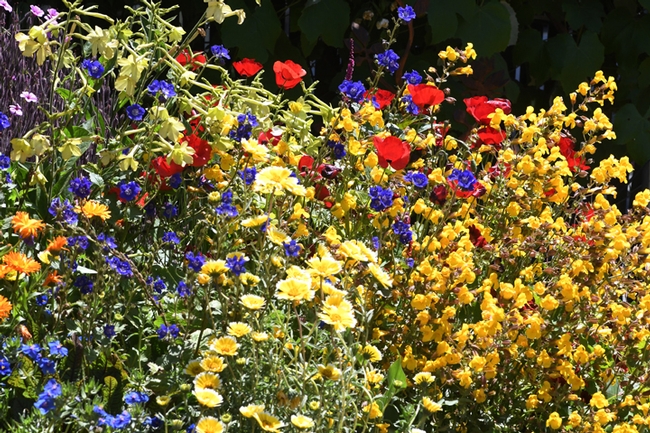
Colorful BOG garden in the early spring: among the flowers are tidy tips, desert bell, and European red flax. (Photo by Kathy Keatley Garvey)
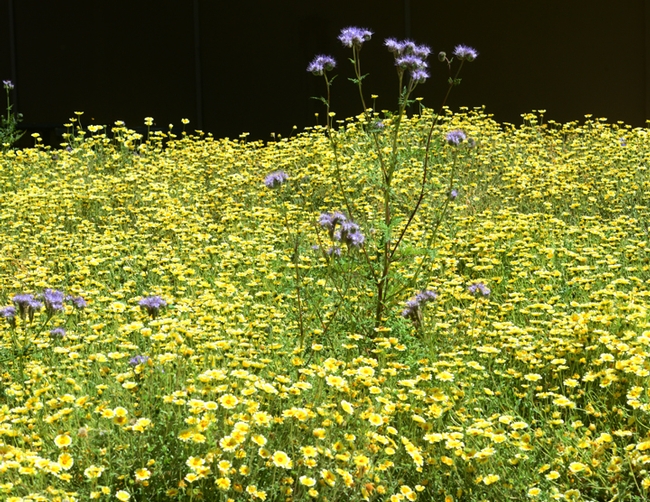
A mini-meadow of tidy tips, Layia platyglossa, with tall phacelia, Phacelia tanacetifolia. (Photo by Kathy Keatley Garvey)
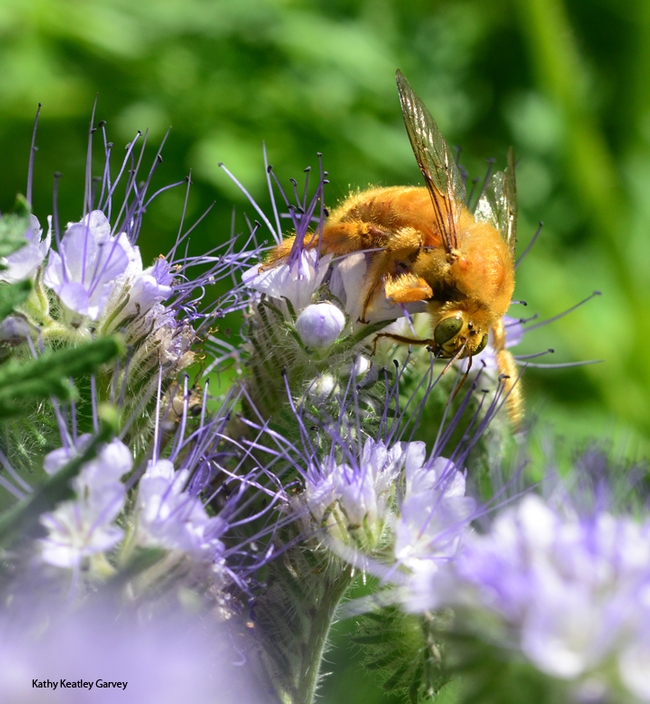
A male Valley carpenter bee, (Xylocopa varipuncta) forages on phacelia. (Photo by Kathy Keatley Garvey)
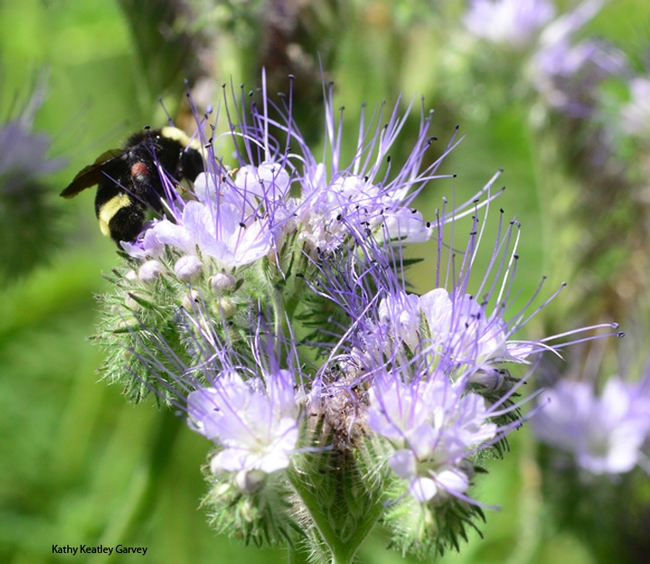
A yellow-faced bumble bee (Bombus vosnesenskii) sips nectar from phacelia. (Photo by Kathy Keatley Garvey)
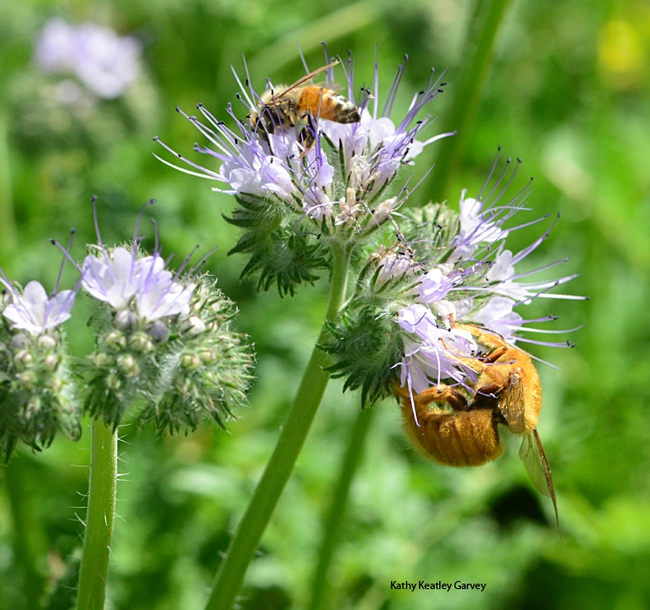
Size comparison! A honey bee is dwarfed by a male Valley carpenter bee, Xylocopa varipuncta. (Photo by Kathy Keatley Garvey)
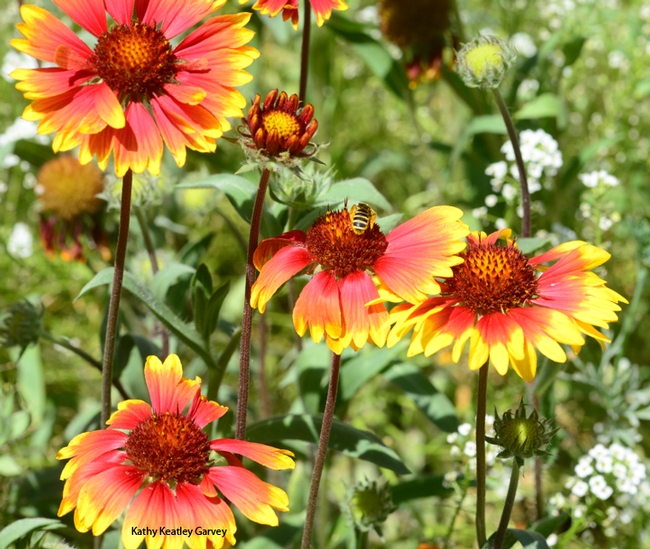
Many species of bees--as well as butterflies and other insects--are drawn to the blanketflower, Gaillardia. (Photo by Kathy Keatley Garvey)

